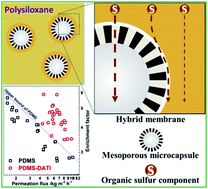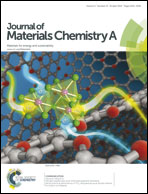Creation of hierarchical structures within membranes by incorporating mesoporous microcapsules for enhanced separation performance and stability†
Abstract
In this study, we present a novel approach for fabricating hybrid membranes with superior separation performance and physicochemical stability by incorporating multifunctional dopamine mesoporous microcapsules upon CaCO3 template. The microcapsules are synthesized via the synergy of surface segregation, metal–organic coordination and biomimetic mineralization. The micro-scale hollow lumen and the mesoporous wall decrease diffusion resistance of the membranes by endowing smaller effective membrane thickness and introducing additional shorter permeation pathways for the penetrants, which lead to a faster mass transfer within the membranes. Meanwhile, the microcapsules bridge the polymer chains mainly owing to the numerous mesopores and unique bio-adhesion, which render the optimal polymer–microcapsule interface. Due to the hierarchical structures spanning from microscale, nanoscale to molecular-scale within the membranes, the membranes display remarkably enhanced permeation flux and desired enrichment factor when utilized for model gasoline separation. In addition, due to the elevated cohesive energy and reinforced chain rigidity, the membranes display higher thermal and mechanical stability. This study can identify a facile, generic, and efficient route to design and fabricate a variety of robust, high-performance hybrid membranes for a broad range of energy and environment-related applications.


 Please wait while we load your content...
Please wait while we load your content...